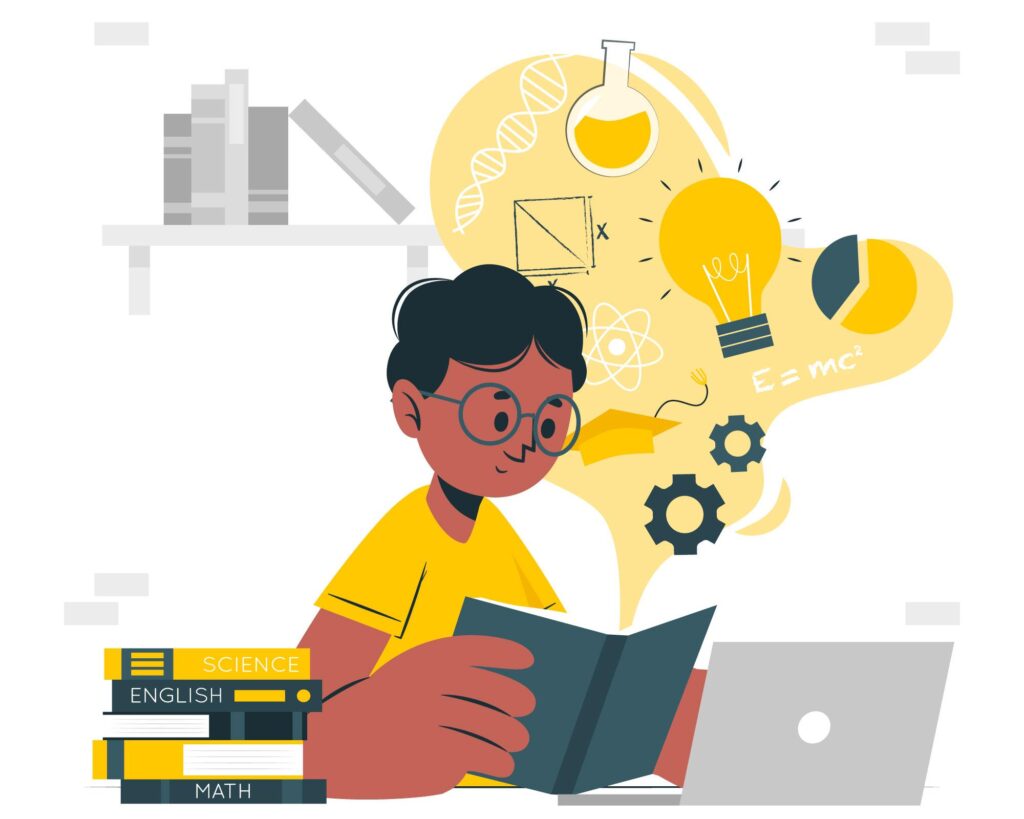Imagine possessing a problem-solving power that can help you take in as much information and knowledge as you could possibly want. Power that lets out new modes of creativity, productivity and proficiency that place you above others. It is my pleasure to introduce you to the Second Brain study method, the new way of learning and knowledge acquisition that is revolutionizing ways of thinking, working, and creativity.
Today we are faced with an overload of information, concepts, and observations, yet the biological brain has limits to what it can take. This is where the Second Brain comes in handy—an external store of knowledge that owes its existence to our innate cognitive skills, enabling us to harness an incalculable potential of improvement and creativity. Through utilizing this external brain, you shall find a world of opportunities where knowledge transforms into wisdom and wisdom transforms into results.
What Is The Second Brain Study Method?
The concept of “Second Brain” was born out of an understanding that, as much as the human brain is perhaps the most complex organ in known reality, it does have some limitations, especially vis-a-vis the different forms of information that one deals with in their lifetime and on a daily basis in particular.
When it comes to information processing in the present, decision-making and idea generation, our biological brains are incredibly efficient. But they are not as efficient in terms of data storage and retrieval as well as in keeping focused, especially with the presence of numerous interruptions.
The idea of a Second Brain study method essentially involves an organized and external store of ideas, knowledge and tasks—a way of adding to the natural abilities of the brain by using well-proven supplementary systems.
This is not a new idea; diaries, notebooks and even cards that writers and scholars of the past used are the forerunners of this concept. The major difference in the modern Second Brain is that it is designed to work with tools that capture, sort and index information on scales that would have been inconceivable in earlier generations.
The current form of the Second Brain method is attributed to Tiago Forte, who refined this way of working through his experience in consulting and self-improvement. He noted that in today’s world, most previous methodologies of taking notes and organizing tasks did not suffice. By integrating aspects of project management, knowledge management, and time management, he developed a system that not only enables the person to handle his or her tasks efficiently but also promotes learning and creativity.
Key Components Of The Second Brain Study Method
The Second Brain study method is built around four key principles, which are: • Capture; • Organize; • Distill; • Express. These pillars form a foundation through which information can be controlled and utilized for overall and career-related aspirations.
1. Capture: Collecting Information
The first step in the Second Brain method is to gather material that one finds in their day-to-day existence. This can be anything from what you think of at the moment to what you have read in a book, the things that you have to do, even interesting articles you come across on the net. Its purpose is to make certain that important information is not written off, remains in a specific location and can be retrieved at some point in the future.
The capture process can be compared to “inboxing” one’s brain—that is, a place where all the information can be stored. The core of successful capture is to make it as integrated and natural as possible. This is why digital tools are essential.
Software for creating notes such as Evernote, Notion, or Obsidian lets one jot information down quickly and across devices, be it a personal computer, tablet, or phone. These tools often include things like web capture, where you can capture an article or a webpage in your notes and voice input, which is helpful for when you simply don’t want to type something out.
2. Organize: Structuring Your Knowledge
This is an important point because, after information has been captured in whatever form, it is processed and organized so as to be easily accessed later. This is where many people fail, This is because the amount of information which is available is very large. The Second Brain method confronts this challenge by offering a very robust but easy-to-implement structuring system that goes by the name of PARA: Projects, Areas, Resources, and Archives.
- Projects: This section concerns any process in progress, which may consist of several subtasks that have to be done concurrently or one after another. In other words, if you have created a document at your workplace, preparing for a holiday or writing a book, these will fall under projects.
- Areas: They are activities that have no deadline, despite the fact that they may deal with repetitive responsibilities throughout the fiscal year. They could be, for instance, health, money, or career growth.
- Resources: This category is for documents that may be useful in the future and which do not fall into any project- or subject-specific subfolder. This might include articles, research, tutorials and the like.
- Archives: The archive category is for information that is no longer considered relevant for the task at hand but might prove valuable later on.
PARA is a practical tool that can be easily adjusted to your needs, and that is why you may use it to structure your Second Brain.
3. Distill: Refining and extracting Value
Following the collection and classification of knowledge, the next activity is the digestion stage, which involves sorting through the knowledge acquired to find the most useful information and ideas. This step helps to get the most useful and important information that will be useful in work and personal life.
The process called distillation consists of making marginal notes, underlining the most important pieces of information, paraphrasing the information and sometimes searching for certain relations between the two or more pieces of information. This process also assists in reducing the time taken in reviewing the work done so that, in the future, one can easily recall what was done and why.
One of the practices which can be employed in the distillation process is the preparation of summaries or ‘cheat sheets’ on the given areas of study. This way, you not only gain a better understanding of the concepts discussed but also construct a useful summary that can be easily reviewed when needed. This can be particularly helpful for learners or any other person who needs to memorize a lot of information in the long run.
Another interesting thing that is connected with distillation is progressive summarization, another concept by Tiago Forte. This involves going through information over and over again in an attempt to condense it and only highlight key points.
4. Express: putting Knowledge to work
The fourth and last component of the Second Brain study method is expression, where the ideas or information that has been sorted and categorized can help in creating new ideas, solving of problems or accomplishing tasks. That is when the true importance of the Second Brain is revealed, as it helps you make the most of the knowledge you have gathered to accomplish your objectives.
The choice of expression may vary depending on the goal that you set for yourself as an individual or a professional. For a writer, it means using notes and ideas that emerged in the course of Second Brain’s creation and development to write a new article or a book. For a business professional, it might mean that they are switching to the previous notes of a project as the input to the new strategy. It could mean summarizing some points from different sources for a lecture for a student or even preparing for an exam.
The major principle to follow is that the Second Brain must be within easy reach and fully indexed for easy reference. Easy access to these sources and their immediate retrieval for use saves one the energy that would have been used to look for the information, thus making room for thinking and solving problems. It is especially significant in the contemporary world, in which flexibility and creativity determine success.
In addition, the expression of knowledge results in the development of new knowledge and ideas. Fresh insights and ideas can be obtained by linking different pieces of information and using them in a chain of thought that has been utilized before. This is one of the strengths of the Second Brain study method—it not only assists in the handling of the information but also strengthens the skills of developing ideas and strategies.
Conclusion
The Second Brain study method can be used effectively as a system to deal with the problem of information overload in the present world. When you actively practice the four methods of capture, organization, distillation, and expression, you improve the way you learn new things, come up with ideas, and work. No matter whether you are a student, a working professional or an individual who wants to handle multiple projects and tasks personally, the Second Brain concept can come in handy in achieving your goal with less stress and confusion.


